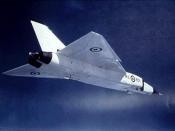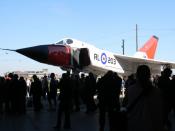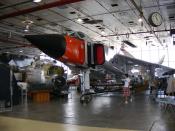The Avro Arrow
After World War 2 in the 1950's the A.V. Roe aircraft company was restructuring and looking for new aviation projects. During the war, the Malton, Toronto-based company had produced several planes for the Allied Forces, such as the Anson, the Lysander and the Lancaster bombers. (www.avroland.ca/al-avro-related-links.) However, it was now peacetime, and new aviation ideas were surfacing. At the same time, the Cold War was "heating up" between the United States and the USSR. Nuclear bomb threats were imminent and American citizens lived in fear that a nuclear war would begin.
The RCAF was in need of a replacement for the fighter plane CF-100, which was too slow and heavy. Plans were drawn up for a new "Jet Interceptor." (Storms of Controversy : The Secret Avro Arrow Files Revealed 14.) The idea was that this plane would fly past the north pole and shoot down the invading Russian planes in the far north before they could reach populated areas in the south.
(The Arrow 54-55.) This plane would protect Canada as well as the United States, since the shortest flying route to the United States is over Canada. The revolutionary Mach 2 + "Avro Arrow" was designed. It was a large but lightweight fighter plane, designed with delta-wings and twin engines, which could leave bases in the south to reach invaders in the north within minutes. (The Arrow 69-75.)
To save design time and costs, a prototype of the Arrow was not built, but instead the company used scale models for wind tunnel and high mach tests. (Storms of Controversy : The Secret Avro Arrow Files Revealed 42.) The results from these types of testing went straight to the production line.
The first flight of the Avro Arrow on March 25, 1958 was successfully flown...


